Have you ever imagined what it would be like to live at the Gardner Museum, surrounded by artistic masterpieces, elegant furnishings, and an ever-flowering courtyard? With all that beauty comes a lot of upkeep, so how would you keep up with the cobwebs? Well, that is a question the Collection Maintenance Technician Team thinks about all the time!
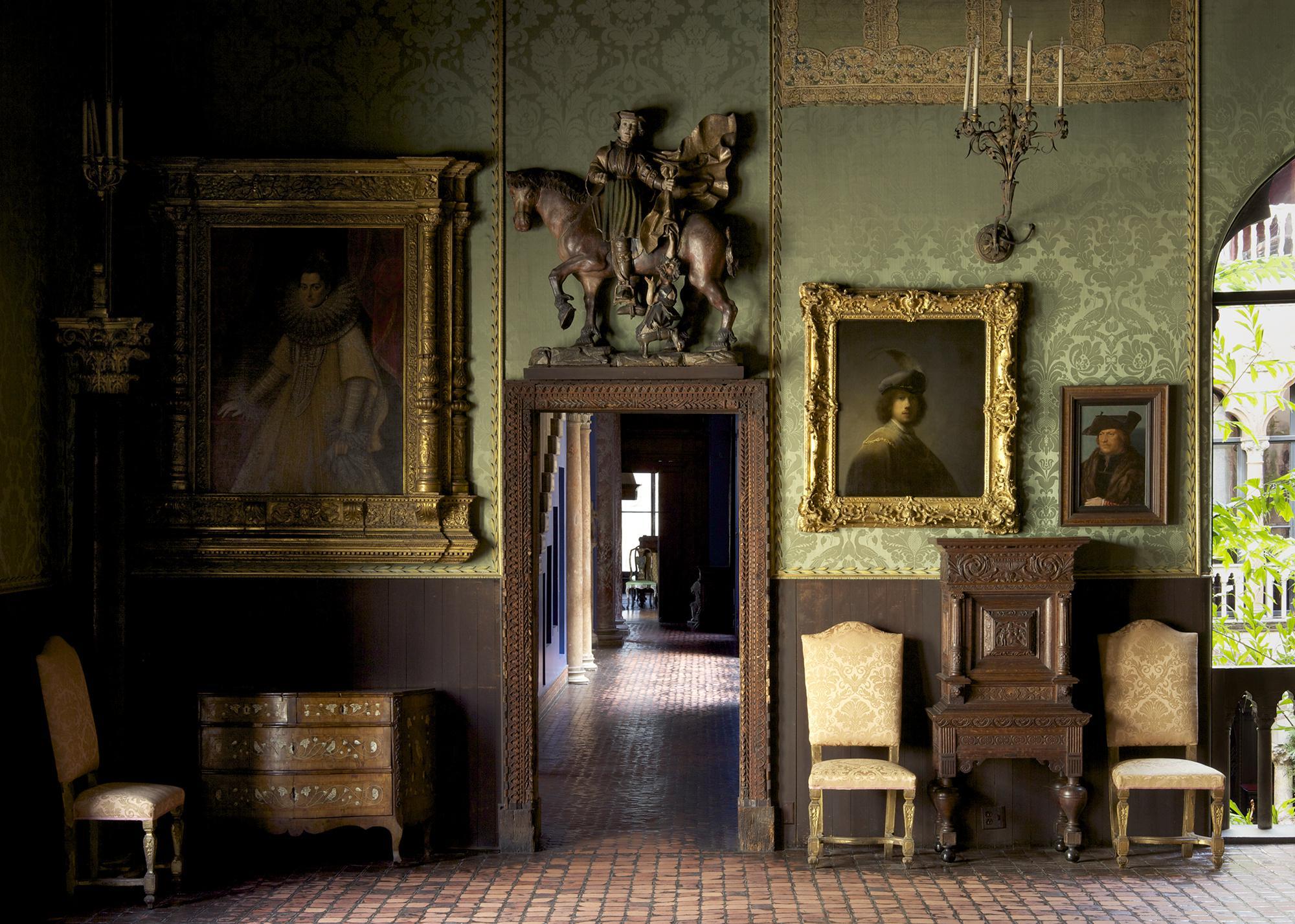
Dutch Room, Isabella Stewart Gardner Museum, Boston
Photo: Sean Dugan
The Collection Maintenance Technicians (CMTs) are a team of four who work every Tuesday while the museum is closed to the public. The CMTs move systematically throughout the Museum’s galleries, cleaning the objects in each room from ceiling to floor to remove the accumulation of dust from fragile surfaces. Their most frequently used tools are HEPA-filtered vacuums and soft brushes. The work is both physically challenging and delicate: imagine kneeling on a hard floor or balancing on a high ladder while cleaning a centuries-old object!
CMTs often come to the position with a mixture of past experience and this position is frequently a launching board for many museum careers. CMT training involves a combination of directly working with members of the Conservation team and shadowing fellow CMTs. One of the most basic and important skills CMTs are trained in is proper art handling.
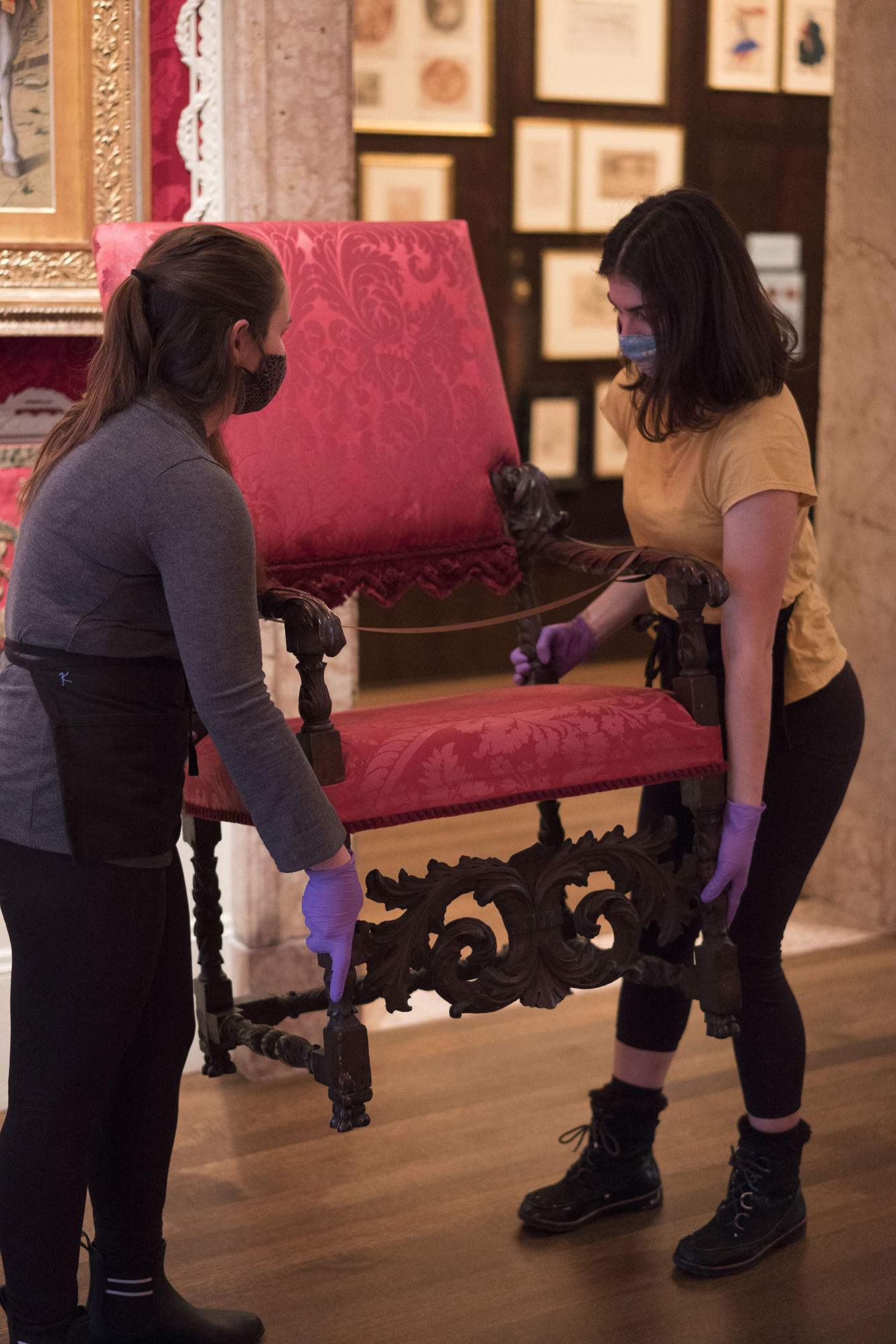
Kacey Green and Vanessa Escamilla, carefully move an armchair in the Raphael Room, 2021
Now that we have an understanding of what a CMT does, let’s meet the team!
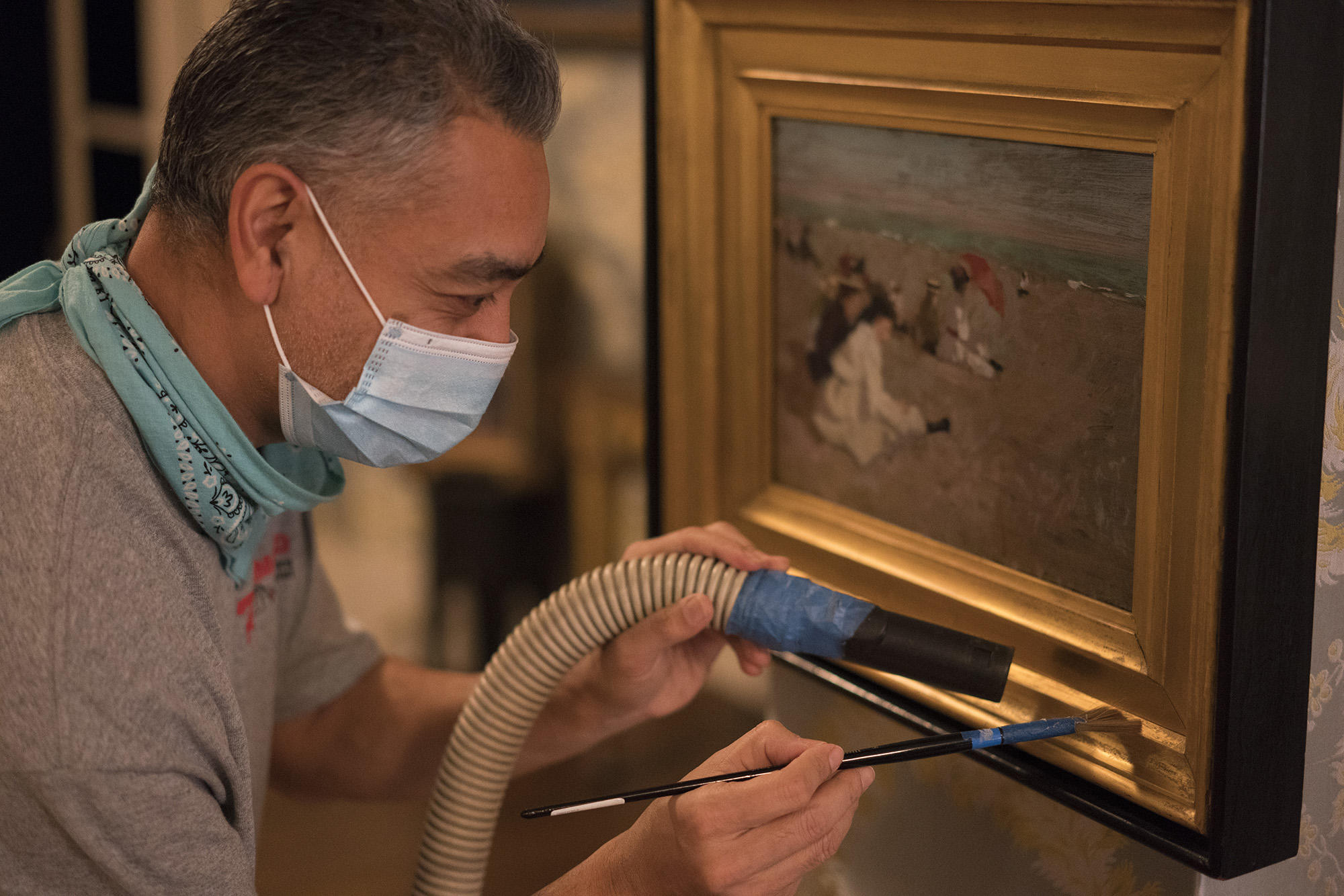
Prabhat Srestha gently dusts a gilded frame in the Blue Room, 2021
My name is Prabhat K. Srestha and in addition to being a CMT, I’m also a documentary photographer. My interest in my role as a CMT is not just professional—art preservation is also a topic that is close to my heart. I grew up in Katmandu, Nepal, surrounded by ancient works of art from the many Asian cultures and religions that have long been part of the Kathmandu Valley. When I was young I was captivated by the beauty of the statues, paintings, and carvings at the local temples and shrines throughout my city, but recently I have been deeply saddened by the lack of art preservation in Nepal as the country has rushed to modernize and rebuild after the devastating earthquake in 2015. Seeing the deterioration of so many centuries-old historic and cultural artistic masterpieces sparked my passion for art conservation.
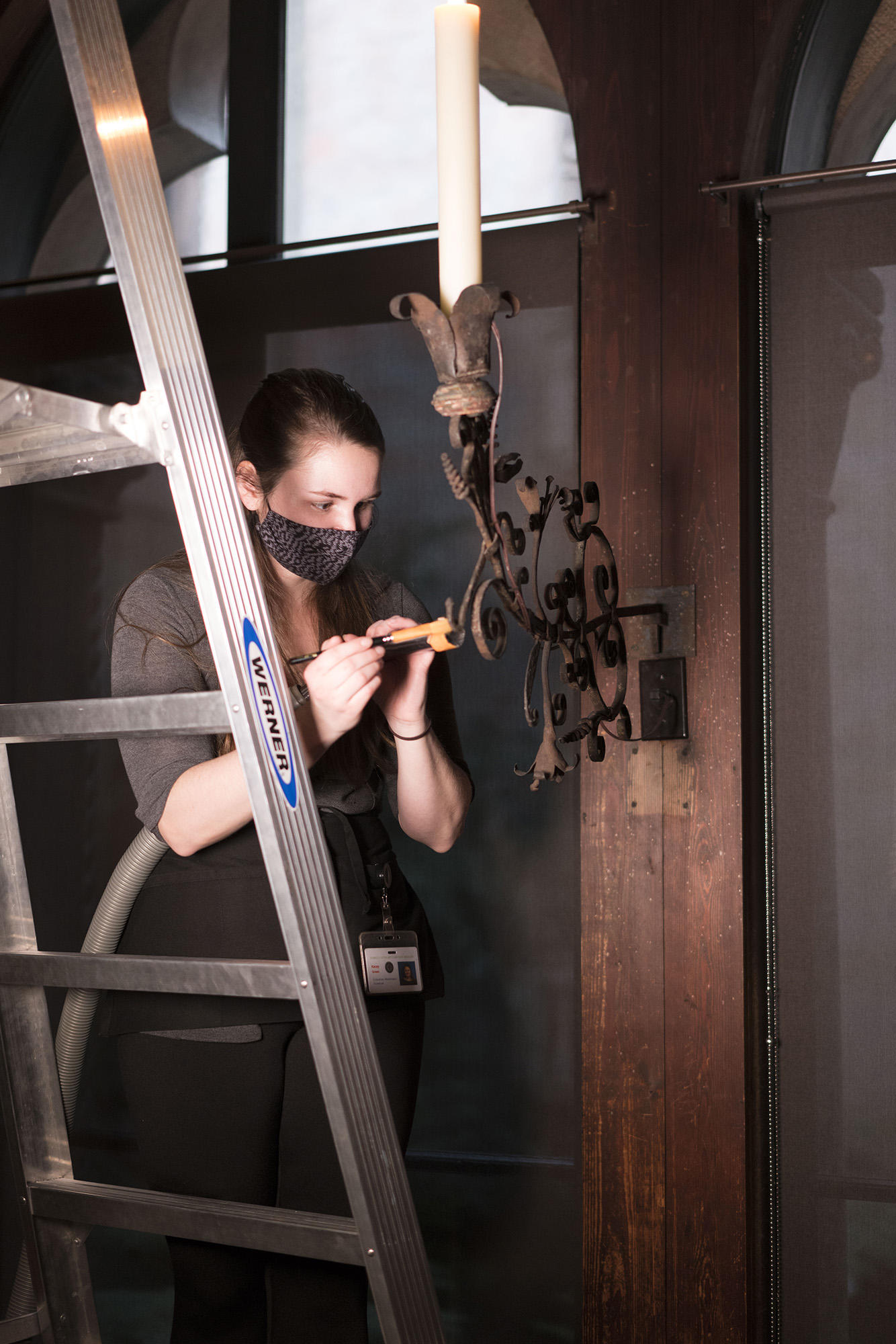
Kacey Green uses a ladder to reach up to a wrought iron bracket in the Tapestry Room, 2021
My name is Kacey Green and I plan to eventually work as an art conservator. When I joined the team back in 2019, I brought with me preventive conservation and integrated pest management experience from prior work in historic house museums. It is essential for the CMTs to be aware of any possible pest activity within the museum because we are the frontline protection for the collection. Our job is unique because we have the opportunity to develop deep connections with the collection. We have long, uninterrupted moments with the artwork, and these intimate moments cause each of us to gravitate toward certain objects and galleries. My personal inclination is toward the books, trinkets, and paintings that hide amongst the masterpieces. Each day at this job is a day of exploration and discovery.
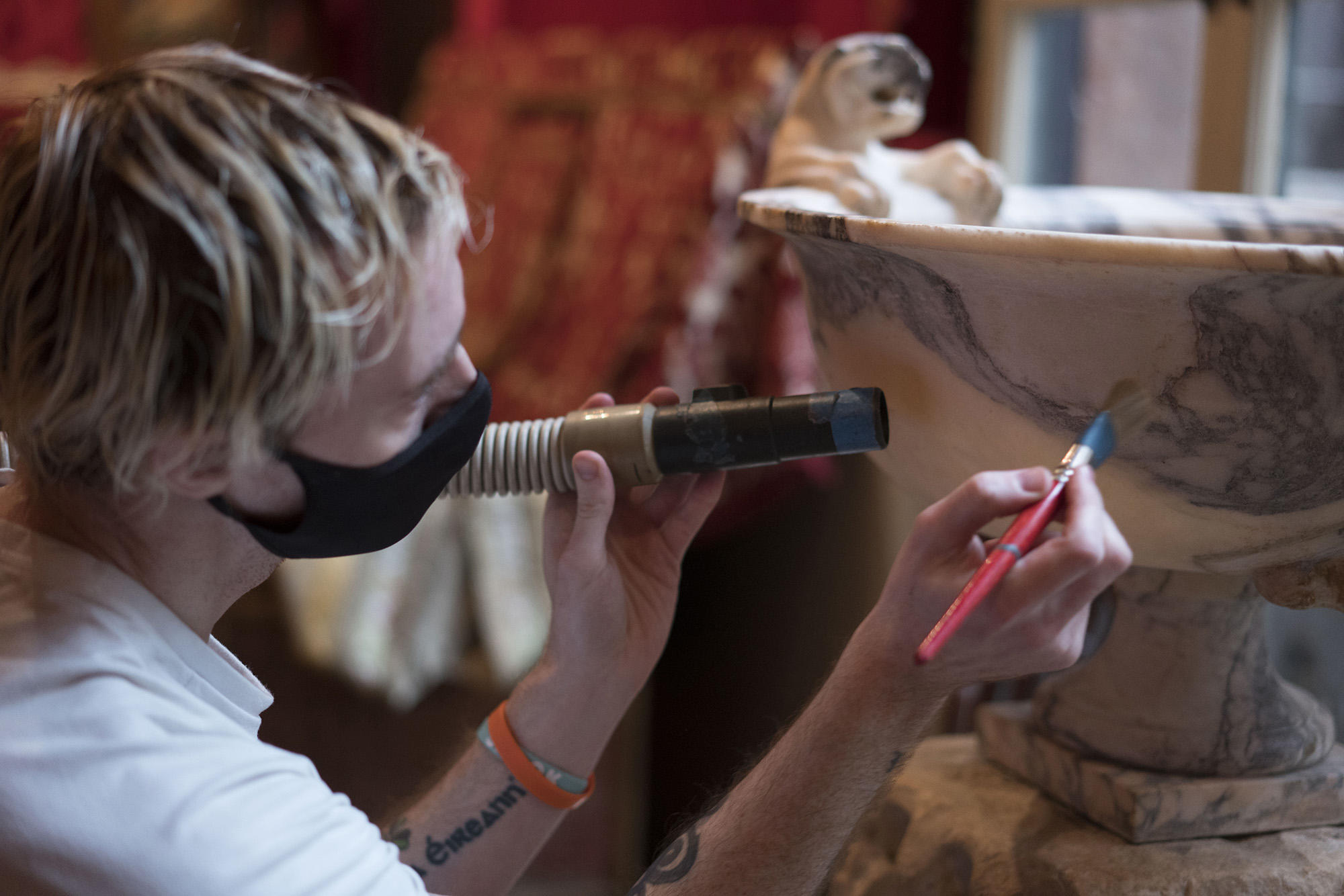
Joe McGrath uses a soft brush to remove surface dust from a bowl in the Raphael Room, 2021
My name is Joe McGrath, and I’m a gallery guard and visitor's services associate in addition to a CMT. Each of these roles offers a different perspective on the happenings at the Gardner. One of the first aspects of conservation I became aware of was touch. As a gallery guard the very notion of touching anything in the collection was surprising. But the close proximity and tactile nature of dusting the collection gave me a new appreciation for dimension, shape, and texture, especially in my own work as a painter. One piece I've come to love is the Roman Bowl with Lions in the Raphael Room featuring two lions clinging to the edges of a large bowl. I find myself able to feel the cold, smooth surface through the brush. The dynamic shape and sense of gravity add a feeling of urgency to the lions’ eternal climb up the sides of the bowl.
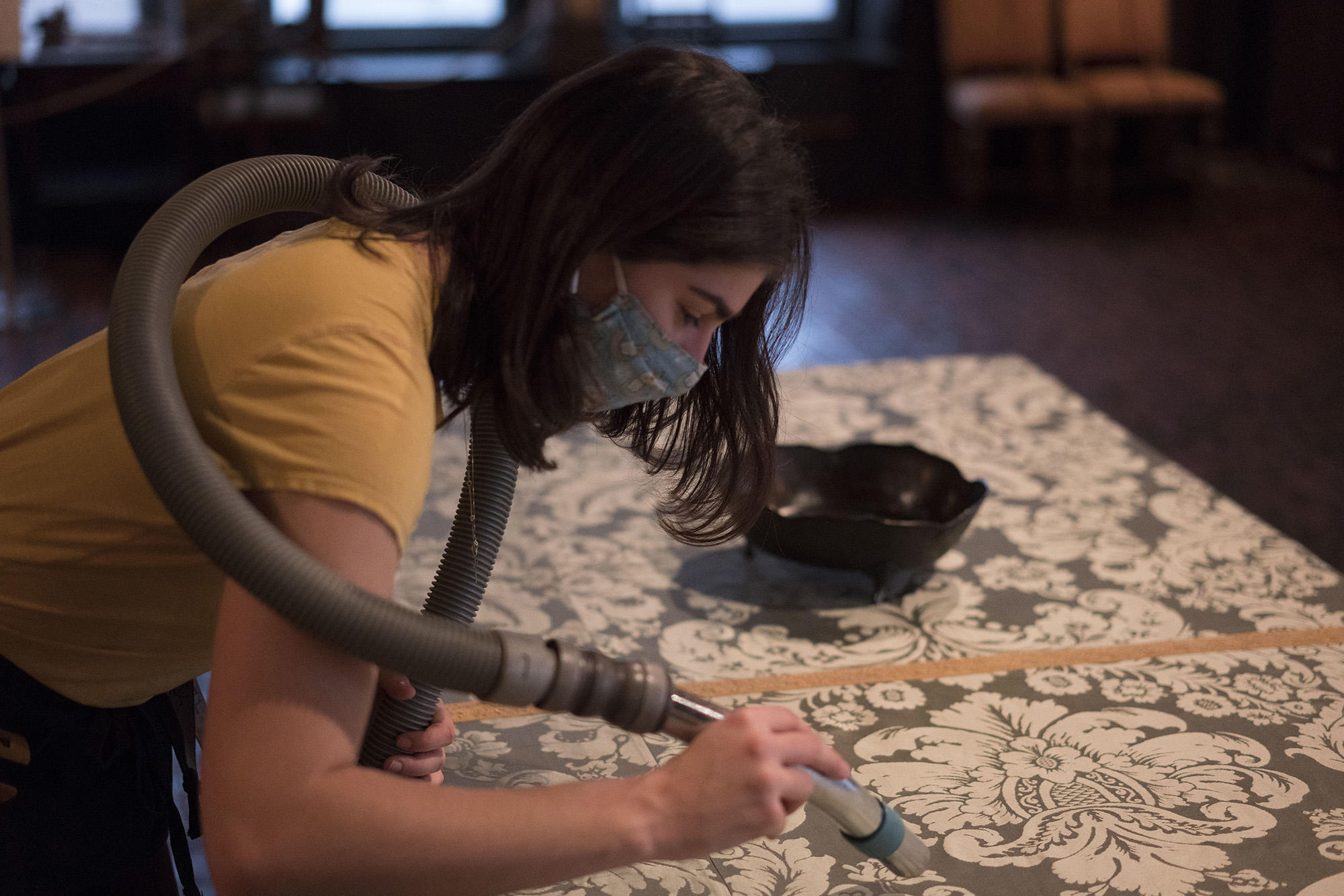
Vanessa Escamilla hovers over a textile table covering to remove dust, 2021
My name is Vanessa Escamilla; I’m an undergraduate at MassArt where I’m double majoring in Art History and Painting. My experience at the Gardner Museum has helped me to understand the history of art and painting, in particular. I have developed an intimate relationship with the collection through hands-on experience and open discussions about the pieces and their histories. Sitting with objects, especially those with foreign pasts and complicated histories, has filled me with a love for art history. Every groove, crack, and stroke of paint pushes me to investigate further the endless wealth of stories and history contained in this museum.
We hope this has given you some insight into the important preventive conservation work of the CMTs and what it takes to keep up with the cobwebs at the Gardner Museum!
You Might Also Like

Learn More
Conservation at the Gardner

Read More on the Blog
Preserving Our Colorful History: The Soisson Window

Learn More
CMTs Inspire Artist-in-Residence, Nari Ward